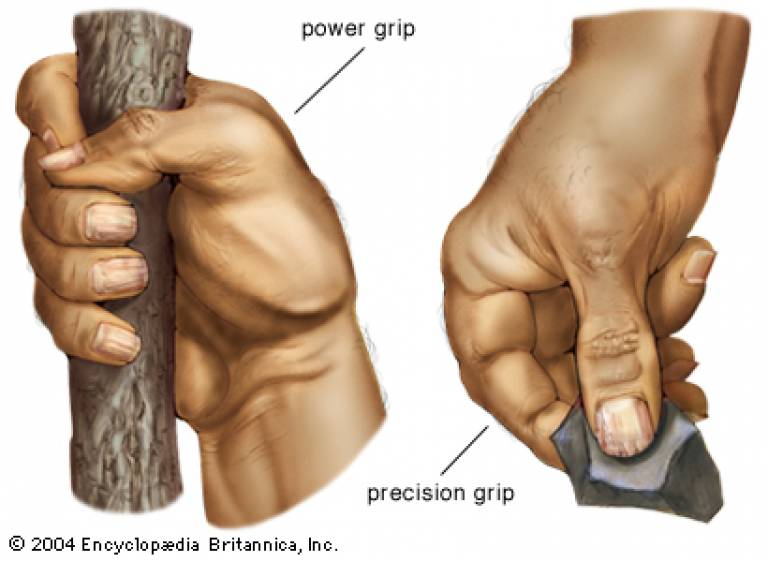The Trabecular Bone of the Thumb can detect left/right directional asymmetry
9 August 2016
Humans display an 85-95% cross-cultural right-hand bias in skilled tasks, which is considered a derived behaviour because such a high frequency is not reported in wild non-human primates.
 Handedness is generally considered to be an evolutionary byproduct of selection for manual dexterity and augmented visuo-cognitive capabilities within the context of complex stone tool manufacture/use. Testing this hypothesis requires an understanding of when appreciable levels of right dominant behaviour entered the fossil record. Because bone remodels internally, skeletal asymmetries are thought to reflect greater mechanical loading on the dominant side, but incomplete preservation of external morphology and ambiguities about past loading environments complicate interpretations. The team of palaeoanthropologists test if internal trabecular bone is capable of providing additional information by analysing the thumb of Homo sapiens and Pan. They demonstrate that trabecular bone of the thumb can record a history of appreciable levels of left or right dominant behaviour. This study is one in a long chain that attempts to clarify what the trabecular structure can tell us about how chimps and humans use their hands. The team recommend combining this work with future studies of other skeletal elements before taking the next step and applying this research to the hominin fossil record.
Handedness is generally considered to be an evolutionary byproduct of selection for manual dexterity and augmented visuo-cognitive capabilities within the context of complex stone tool manufacture/use. Testing this hypothesis requires an understanding of when appreciable levels of right dominant behaviour entered the fossil record. Because bone remodels internally, skeletal asymmetries are thought to reflect greater mechanical loading on the dominant side, but incomplete preservation of external morphology and ambiguities about past loading environments complicate interpretations. The team of palaeoanthropologists test if internal trabecular bone is capable of providing additional information by analysing the thumb of Homo sapiens and Pan. They demonstrate that trabecular bone of the thumb can record a history of appreciable levels of left or right dominant behaviour. This study is one in a long chain that attempts to clarify what the trabecular structure can tell us about how chimps and humans use their hands. The team recommend combining this work with future studies of other skeletal elements before taking the next step and applying this research to the hominin fossil record.
Trabecular architecture in the thumb of Pan and Homo: implications for investigating hand use, loading, and hand preference in the fossil record
Nicholas B. Stephens, Tracy L. Kivell, Thomas Gross, Dieter H. Pahr, Richard A. Lazenby, Jean-Jacques Hublin, Israel Hershkovitz and Matthew M. Skinner
DOI: 10.1002/ajpa.23061
 Close
Close

